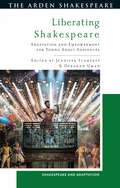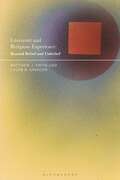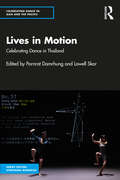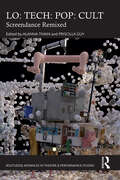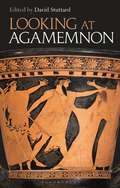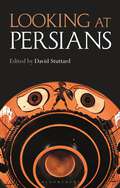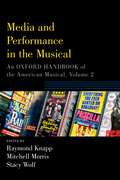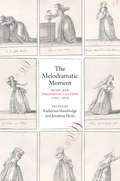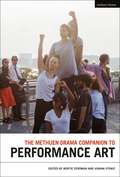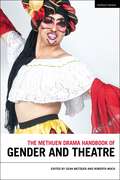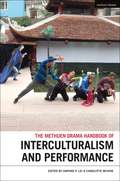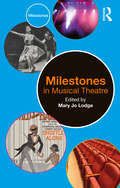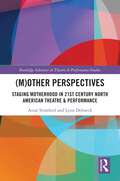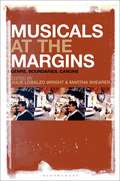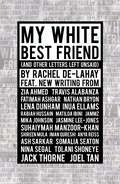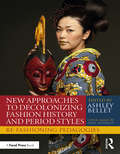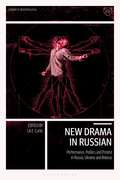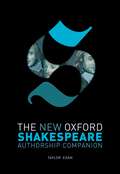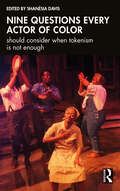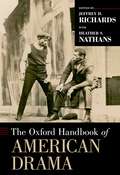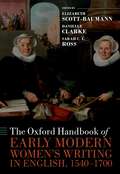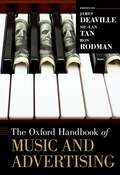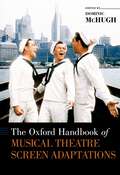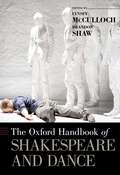- Table View
- List View
Liberating Shakespeare: Adaptation and Empowerment for Young Adult Audiences (Shakespeare and Adaptation)
The collective trauma of the COVID-19 pandemic. Digital shaming. Violence against women. Sexual bullying. Racial slurs and injustice. These are just some of the problems faced by today's young adults. Liberating Shakespeare explores how adaptations of Shakespeare's plays can be used to empower young audiences by addressing issues of oppression, trauma and resistance. Showcasing a wide variety of approaches to understanding, adapting and teaching Shakespeare, this collection examines the significant number of Shakespeare adaptations targeting adolescent audiences in the past 25 years. It examines a wide variety of creative works made for and by young people that harness the power of Shakespeare to address some of the most pressing questions in contemporary culture – exploring themes of violence, race relations and intersectionality. The contributors to this volume consider whether the representations of characters and situations in YA Shakespeare can function as empowering models for students and how these works might be employed within educational settings. This collection argues that YA Shakespeare represents the diverse concerns of today's youth and should be taken seriously as art that speaks to the complexities of a broken world, offering moments of hope for an uncertain future.
Literature and Religious Experience: Beyond Belief and Unbelief
This book challenges the status quo of studies in literature and religion by returning to “experience” as a bridge between theory and practice. Essays focus on keywords of religious experience and demonstrate their applications in drama, fiction, and poetry. Each chapter explores the broad significance of its keyword as a category of psychological and social behavior and tracks its unique articulation by individual authors, including Conrad, Beecher Stowe and Melville. Together, the chapters construct a critical foundation for studying literature not only from the perspectives of theology and historicism but from the ways that literary experience reflects, reinforces, and sometimes challenges religious experience.
Lives in Motion: Celebrating Dance in Thailand (Celebrating Dance in Asia and the Pacific)
Lives in Motion celebrates dance in Thailand, focusing on the diversity of Thailand’s dance cultures and their place in today’s world. Giving voice to eminent artists and scholars on the complex roles that Thailand is pursuing for artful movement at home and abroad, the book provides key perspectives on Thai dance traditions and practitioners. It explores the many forms and meanings in contemporary dance, changing local traditions in the country, the evolution of Thai dance on the global stage, and hybrid features of the Thai dance world. The book examines how hybridity has been integral to dance cultures in Thailand and discusses how they have actively adapted and negotiated their knowledge in relation to modernity and globalization. Developing new models, standards and sites for dance, movement and theater, dance in Thai has been advancing in innovative ways, whether it is to include fresh forms of skilled bodily movement or to expand in new arenas like tourism and online platforms. Similarly, old systems of training, which included artists’ homes, palaces, and temples, have been adapted into the new world of modern education, media, home schooling, and new community rituals. A pioneering contribution on Thai performing arts, this volume examines contemporary Thai dance cultures in the local, national, regional, and global contexts. It will be of great interest to scholars and researchers of dance and performance studies, cultural studies, Southeast Asia studies, and art.
LO: Screendance Remixed (ISSN)
This edited collection assembles international perspectives from artists, academics, and curators in the field to bring the insights of screendance theory and practice back into conversations with critical methods, at the intersections of popular culture, low-tech media practices, dance, and movement studies, and the minoritarian perspectives of feminism, queer theory, critical race studies and more.This book represents new vectors in screendance studies, featuring contributions by both artists and theoreticians, some of the most established voices in the field as well as the next generation of emerging scholars, artists, and curators. It builds on the foundational cartographies of screendance studies that attempted to sketch out what was particular to this practice. Sampling and reworking established forms of inquiry, artistic practice and spectatorial habits, and suspending and reorienting gestures into minoritarian forms, these conversations consider the affordances of screendance for reimaging the relations of bodies, technologies, and media today.This collection will be of great interest to students and scholars in dance studies, performance studies, cinema and media studies, feminist studies, and cultural studies.
Looking at Agamemnon
Agamemnon is the first of the three plays within the Oresteia trilogy and is considered to be one of Aeschylus' greatest works. This collection of 12 essays, written by prominent international academics, brings together a wide range of topics surrounding Agamemnon from its relationship with ancient myth and ritual to its modern reception. There is a diverse array of discussion on the salient themes of murder, choice and divine agency. Other essays also offer new approaches to understanding the notions of wealth and the natural world which imbue the play, as well as a study of the philosophical and moral questions of choice and revenge. Arguments are contextualized in terms of performance, history and society, discussing what the play meant to ancient audiences and how it is now received in the modern theatre. Intended for readers ranging from school students and undergraduates to teachers and those interested in drama (including practitioners), this volume includes a performer-friendly and accessible English translation by David Stuttard.
Looking at Persians
Aeschylus' Persians is unique in being the only extant Greek tragedy on an historical subject: Greece's victory in 480 BC over the great Persian King, Xerxes, eight years before the play was written and first performed in 472 BC. Looking at Persians examines how Aeschylus responded to such a turning point in Athenian history and how his audience may have reacted to his play. As well as considering the play's relationship with earlier lost tragedies and discussing its central themes, including war, nature and the value of human life, the volume considers how Persians may have been staged in fifth-century Athens and how it has been performed today. The twelve essays presented here are written by prominent international academics and offer insightful analyses of the play from the perspectives of performance, history and society. Intended for readers ranging from school students and undergraduates to teachers and those interested in drama (including practitioners), this volume also includes an accurate, accessible and performance-friendly English translation of Persians by David Stuttard.
Lope de Vega: Fuente Ovejuna (Aris & Phillips Hispanic Classics)
Fuente Ovejuna (C.1613) is the most famous and frequently performed play by the creator of Spanish theatre, Lope de Vega (1562-1635). Astonishingly for its period, it celebrates the murder in 1476 of a nobleman, the Grand Commander of the Military Order of Calatrava, by the peasants he had oppressed, and their subsequent solidarity under torture. Fuente Ovejuna , however, is less a history lesson or political tract than an optimistic moral fable. Spanish text with facing-page translation, introduction and notes.
Media and Performance in the Musical: An Oxford Handbook of the American Musical, Volume 2 (Oxford Handbooks)
For the past several years, the American musical has continued to thrive by reflecting and shaping cultural values and social norms, and even commenting on politics, whether directly and on a national scale (Hamilton) or somewhat more obliquely and on a more intimate scale (Fun Home). New stage musicals, such as Come from Away and The Band's Visit, open on Broadway every season, challenging conventions of form and content, and revivals offer audiences a different perspective on extant shows (Carousel; My Fair Lady). Television musicals broadcast live hearken back to 1950s television's affection for musical theatre and aim to attract new audiences through the accessibility of television. Film musicals, including Les Misérables and Into the Woods, capitalize on the medium's technical capabilities of perspective and point of view, as well as visual spectacle. Television has embraced the genre anew, and with unexpected gusto, not only devising musical episodes for countless dramatic and comedy series, but also generating musical series such as Galavant and Crazy Ex-Girlfriend. And animated musicals, such as Disney's Moana, hail child and adult audiences with their dual messages, vibrant visual vocabulary, and hummable music. The chapters gathered in this book, Volume II of the reissued Oxford Handbook, explore the American musical from the various media in which musicals have been created to the different components of a musical and the people who do the work to bring a musical to life.
The Melodramatic Moment: Music and Theatrical Culture, 1790–1820
We seem to see melodrama everywhere we look—from the soliloquies of devastation in a Dickens novel to the abject monstrosity of Frankenstein’s creation, and from Louise Brooks’s exaggerated acting in Pandora’s Box to the vicissitudes endlessly reshaping the life of a brooding Don Draper. This anthology proposes to address the sometimes bewilderingly broad understandings of melodrama by insisting on the historical specificity of its genesis on the stage in late-eighteenth-century Europe. Melodrama emerged during this time in the metropolitan centers of London, Paris, Vienna, and Berlin through stage adaptations of classical subjects and gothic novels, and they became famous for their use of passionate expression and spectacular scenery. Yet, as contributors to this volume emphasize, early melodramas also placed sound at center stage, through their distinctive—and often disconcerting—alternations between speech and music. This book draws out the melo of melodrama, showing the crucial dimensions of sound and music for a genre that permeates our dramatic, literary, and cinematic sensibilities today. A richly interdisciplinary anthology, The Melodramatic Moment will open up new dialogues between musicology and literary and theater studies.
The Methuen Drama Companion to Performance Art (Methuen Drama Handbooks)
The Methuen Drama Companion to Performance Art offers a comprehensive guide to the major issues and interdisciplinary debates concerning performance in art contexts that have developed over the last decade. It understands performance art as an institutional, cultural, and economic phenomenon rather than as a label or object. Following the ever-increasing institutionalization and mainstreaming of performance, the book's chapters identify a marked change in the economies and labor practices surrounding performance art, and explore how this development is reflective of capitalist approaches to art and event production. Embracing what we perceive to be the 'oxymoronic status' of performance art-where it is simultaneously precarious and highly profitable-the essays in this book map the myriad gestures and radical possibilities of this extreme contradiction.This Companion adopts an interdisciplinary perspective to present performance art's legacies and its current practices. It brings together specially commissioned essays from leading innovative scholars from a wide range of approaches including art history, visual and performance studies, dance and theatre scholarship in order to provide a comprehensive and multifocal overview of the emerging research trends and methodologies devoted to performance art.
The Methuen Drama Handbook of Gender and Theatre (Methuen Drama Handbooks)
This is a guide to contemporary debates and theatre practices at a time when gender paradigms are both in flux and at the centre of explosive political battlegrounds.The confluence of gender and theatre has long created intense debate about representation, identification, social conditioning, desire, embodiment, and lived experience. As this handbook demonstrates, from the conventions of early modern English, Chinese, Japanese and Hispanic theatres to the subversion of racialized binaries of masculinity and femininity in recent North American, African, Asian, Caribbean and European productions, the matter of gender has consistently taken centre stage. This handbook examines how critical discourses on gender intersect with key debates in the field of theatre studies, as a lens to illuminate the practices of gender and theatre as well as the societies they inform and represent across space and time. Of interest to scholars in the interrelated areas of feminist, gender and sexuality studies, theatre and performance studies, cultural studies, and globalization and diasporic studies, this book demonstrates how researchers are currently addressing theatre about gender issues and gendered theatre practices. While synthesizing and summarizing foundational and evolving debates from a contemporary perspective, this collection offers interpretations and analyses that do not simply look back at existing scholarship, but open up new possibilities and understandings. Featuring essential research tools, including a survey of keywords and an annotated play list, this is an indispensable scholarly handbook for anyone working in theatre and performance.
Methuen Drama Handbook of Interculturalism and Performance (Methuen Drama Handbooks)
The Methuen Drama Handbook of Interculturalism and Performance explores ground-breaking new directions and critical discourse in the field of intercultural theatre and performance while surveying key debates concerning interculturalism as an aesthetic and ethical series of encounters in theatre and performance from the 1960s onwards. The handbook's global coverage challenges understandings of intercultural theatre and performance that continue to prioritise case studies emerging primarily from the West and executed by elite artists. By building on a growing field of scholarship on intercultural theatre and performance that examines minoritarian and grassroots work, the volume offers an alternative and multi-vocal view of what interculturalism might offer as a theoretical keyword to the future of theatre and performance studies, while also contributing an energized reassessment of the vociferous debates that have long accompanied its critical and practical usage in a performance context. By exploring anew what happens when interculturalism and performance intersect as embodied practice, The Methuen Drama Handbook of Interculturalism and Performance offers new perspectives on a seminal theoretical concept still as useful as it is controversial. Featuring a series of indispensable research tools, including a fully annotated bibliography, this is the essential scholarly handbook for anyone working in intercultural theatre and performance, and performance studies.
Milestones in Musical Theatre (Milestones)
Milestones in Musical Theatre tracks ten of the most significant moments in musical theatre history, from some of its earliest incarnations, especially those crafted by Black creators, to its rise as a global phenomenon. Designed for weekly use in musical theatre courses, these ten chosen snapshots chart the development of this unique art form and move through its history chronologically, tracking the earliest operettas through the mid-century Golden Age classics, as well as the creative explosion in directing talent, which reshaped the form and the movement toward inclusivity that has recast its creators. Each chapter explores how the musical and its history have been deeply influenced by a variety of factors, including race, gender, and nationality, and examines how each milestone represents a significant turning point for this beloved art form. Milestones are a range of accessible textbooks, breaking down the need-to-know moments in the social, cultural, political, and artistic development of foundational subject areas. This book is ideal for diverse and inclusive undergraduate musical theatre history courses.
**Missing**: Staging Motherhood in 21st Century North American Theatre & Performance (Routledge Advances in Theatre & Performance Studies)
This anthology examines maternity in contemporary performance at the intersection of a wide range of topics from nationhood to mental health, queer parenting, embodied dramaturgy, cultural practice, and immigration. Across the breadth of these themes, we interrogate the cultural implications and politics of how we script, perform, receive, and define mothers, challenging many of the normalizing and patriarchal tropes associated with the mother-as-character. This book includes critical essays examining twenty-first century dramatic literature, first-hand ethnographic accounts of motherhood in practice, interviews, feminist manifestos, and artist reflections. In its deliberately curated variety, this collection seeks to resist homogeneity and offer instead a range of approaches to key questions: what versions of motherhood get staged, and why? And how do dramatic representations tell us about the role of mothers in our own fraught contemporary moment? This collection will be of great interest to those in academia who are teaching, researching, or studying in the fields of Theatre and Performance Studies, American Studies, and Feminist and Gender Studies.
Musicals at the Margins: Genre, Boundaries, Canons
But is it a musical? This question is regularly asked of films, television shows and other media objects that sit uncomfortably in the category despite evident musical connections. Musicals at the Margins argues that instead of seeking to resolve such questions, we should leave them unanswered and unsettled, proposing that there is value in examining the unstable edges of genre. This collection explores the marginal musical in a diverse range of historical and global contexts. It encompasses a range of different forms of marginality including boundary texts (films/media that are sort of/not quite musicals), musical sequences (marginalized sequences in musicals; musical sequences in non-musicals), music films, musicals of the margins (musicals produced from social, cultural, geographical, and geopolitical margins), and musicals across media (television and new media). Ultimately these essays argue that marginal genre texts tell us a great deal about the musical specifically and genre more broadly.
My White Best Friend: (And Other Letters Left Unsaid)
“Could you put your white best friend on stage and remind them that they're part of the problem? Even if you love them? Even if you never want anyone to feel for even a moment how you feel living in this world every day? Would - could - a white person finally hear what you have to say?”Originally commissioned by The Bunker Theatre as a critically-acclaimed festival that ran in 2019, My White Best Friend collects 23 letters that engage with a range of topics, from racial tensions, microaggressions and emotional labour, to queer desire, prejudice and otherness. Expressing feelings and thoughts often stifled or ignored, the pieces here transform letter writing into a provocative act of candour.Funny, heartfelt, wry and heart-breaking, whether a letter to their younger self or an ode to the writer's tongue, this anthology of exceptional writing is always engaging and thought-provoking.Featuring different letters from some of the most exciting voices in the UK and beyond, My White Best Friend (And Other Letters Left Unsaid) includes work from: Zia Ahmed, Travis Alabanza, Fatimah Asghar, Nathan Bryon, Matilda Ibini, Jammz, Iman Qureshi, Anya Reiss, Somalia Seaton, Nina Segal, Tolani Shoneye, Lena Dunham, Inua Ellams, Rabiah Hussain, Mika Johnson, Jasmine Lee-Jones, Suhaiymah Manzoor-Khan, Shireen Mula, Ash Sarkar, Jack Thorne and Joel Tan.
New Approaches to Decolonizing Fashion History and Period Styles: Re-Fashioning Pedagogies
New Approaches to Decolonizing Fashion History and Period Styles: Re-Fashioning Pedagogies offers a wide array of inclusive, global, practical approaches for teaching costume and fashion history. Costume designers, technicians, and historians have spent the last several years re-evaluating how they teach costume and fashion history, acknowledging the need to refocus the discourse to include a more global perspective. This book is a collection of pedagogical methods aimed to do just that, with an emphasis on easy reference, accessible activities, and rubrics, and containing a variety of ways to restructure the course. Each chapter offers a course description, syllabus calendar, course objectives, and learning outcomes, as well as sample activities from instructors across the country who have made major changes to their coursework. Using a combination of personal narratives, examples from their work, bibliographies of helpful texts, and student responses, contributors suggest a variety of ways to decolonize the traditionally Western-focused fashion history syllabus. This collection of pedagogical approaches is intended to support and inspire instructors teaching costume design, costume history, fashion history, period styles, and other aesthetic histories in the arts.
New Drama in Russian: Performance, Politics and Protest in Russia, Ukraine and Belarus (Library of Modern Russia)
How and why does the stage, and those who perform upon it, play such a significant role in the social makeup of modern Russia, Ukraine and Belarus? In New Drama in Russian, Julie Curtis brings together an international team of leading scholars and practitioners to tackle this complex question. New Drama, which draws heavily on techniques of documentary and verbatim writing, is a key means of protest in the Russian-speaking world; since the fall of the Soviet Union in 1991, theatres, dramatists, and critics have collaborated in using the genre as a lens through which to explore a wide range of topics from human rights and state oppression to sexuality and racism. Yet surprisingly little has been written on this important theatrical movement. New Drama in Russian rectifies this. Through providing analytical surveys of this outspoken transnational genre alongside case-studies of plays and interviews with playwrights, this volume sheds much-needed light on the key issues of performance, politics, and protest in Russia, Ukraine and Belarus.Meticulously researched and elegantly argued, this book will be of immense value to scholars of Russian cultural history and post-Soviet literary studies.
The New Oxford Shakespeare: Authorship Companion (New Oxford Shakespeare)
This companion volume to The New Oxford Shakespeare: The Complete Works concentrates on the issues of canon and chronology—currently the most active and controversial debates in the field of Shakespeare editing. It presents in full the evidence behind the choices made in The Complete Works about which works Shakespeare wrote, in whole or part. A major new contribution to attribution studies, the Authorship Companion illuminates the work and methodology underpinning the groundbreaking New Oxford Shakespeare, and casts new light on the professional working practices, and creative endeavours, of Shakespeare and his contemporaries. We now know that Shakespeare collaborated with his literary and dramatic contemporaries, and that others adapted his works before they reached printed publication. The Authorship Companion's essays explore and explain these processes, laying out everything we currently know about the works' authorship. Using a variety of different attribution methods, The New Oxford Shakespeare has confirmed the presence of other writers' hands in plays that until recently were thought to be Shakespeare's solo work. Taking this process further with meticulous, fresh scholarship, essays in the Authorship Companion show why we must now add new plays to the accepted Shakespeare canon and reattribute certain parts of familiar Shakespeare plays to other writers. The technical arguments for these decisions about Shakespeare's creativity are carefully laid out in language that anyone interested in the topic can understand. The latest methods for authorship attribution are explained in simple but accurate terms and all the linguistic data on which the conclusions are based is provided. The New Oxford Shakespeare consists of four interconnected publications: the Modern Critical Edition (with modern spelling), the Critical Reference Edition (with original spelling), a companion volume on Authorship, and an online version integrating all of this material on OUP's high-powered scholarly editions platform. Together, they provide the perfect resource for the future of Shakespeare studies.
Nine questions every actor of color should consider when tokenism is not enough
This book confronts and analyzes the systemic racism that confronts actors of color in the USA through interviews with leading performers in the nation’s theatrical epicentre of Chicago.Each chapter deals with a different central question, from how these actors approach roles and the obstacles that they face, to the ways in which the industry can change to better enable actors of color. By bringing together these actors and sharing the ways in which they have functioned within the white theatre world, we can appreciate how theatre needs to embrace their identities so that all voices are heard, understood, and valued. The stories of these actors will reflect the systemic racism of the past and present with the hope of remaking the future.This is an important book for students, teachers, and professionals who engage in theatre work, helping them to understand the lived experiences of actors of color through those actors’ own words.
The Oxford Handbook of American Drama (Oxford Handbooks)
When one thinks of American Drama, names like Eugene O'Neill, Arthur Miller, and Tennessee Williams readily come to mind. However, as The Oxford Handbook of American Drama shows, the U.S. has a deep and varied tradition that extends back to the years before the Revolutionary War. The essays gathered here trace U.S dramatic history, ranging from plays by Mercy Otis Warren to Tony Kushner. The volume opens with an exploration of the trials and tribulations of strolling players in the colonial era, before shifting to a discussion of the ways plays were deployed for political ends during the Revolution, most notably by the patriot Mercy Otis Warren. The narrative extends to the post-Revolutionary period when plays were used as vehicles to promote republican virtue. Contributors also explore the vibrant drama to emerge during the nineteenth century, when blackface performers and stars such as Edwin Forrest, Charlotte Cushman, and Edwin Booth dominated the stage. The period also witnessed the arrival of the first piece of musical theater, The Black Crook, which is productively situated in a musical tradition that extends to Rodgers and Hammerstein. The Handbook offers a complex treatment of melodrama - the most popular genre of the century. The volume traces the rise of the country's first black acting company in the 1820s, as well as the growing number of ethnic characters presented on the stage. Several of the contributors also highlight the role of women playwrights such as Anna Cora Mowatt in the development of American drama. At the turn of the twentieth century, the Provincetown Players helped to usher in the era of modern drama, which allowed playwrights such as Eugene O'Neill, Susan Glaspell, and Edna St. Vincent Millay to experiment with the form and attempt topics regarded as taboo at the time. As melodrama gave way to realism, exemplified in the work of O'Neill and Rachel Crothers, other dramatic techniques such as naturalism and expressionism were introduced to the stage. Other topics covered in the Handbook include: the political plays of Arthur Miller; the major freedoms brought to the American stage since the 1960s; the new generation of playwrights, such as Tony Kushner and Harvey Fierstein, who created plays dealing explicitly with topics like AIDS and homosexuality; and the rich genealogy of the African American family play in works by Lorraine Hansberry, August Wilson, and Suzan-Lori Parks. The volume concludes with the bold performance art of the Living Theatre and the new multiculturalism that arrived on the contemporary stage, with various ethnic communities --Mexicans, Puerto Ricans, Asians, and Native Americans-becoming the focus of the action. The Oxford Handbook of American Drama presents a comprehensive introduction to the form in all its guises.
The Oxford Handbook of Early Modern Women's Writing in English, 1540-1700 (Oxford Handbooks)
The Oxford Handbook of Early Modern Women's Writing in English, 1540-1700 brings together new work by scholars across the globe, from some of the founding figures in early modern women's writing to those early in their careers and defining the field now. It investigates how and where women gained access to education, how they developed their literary voice through varied genres including poetry, drama, and letters, and how women cultivated domestic and technical forms of knowledge from recipes and needlework to medicines and secret codes. Chapters investigate the ways in which women's writing was an integral part of the intellectual culture of the period, engaging with male writers and traditions, while also revealing the ways in which women's lives and writings were often distinctly different, from women prophetesses to queens, widows, and servants. It explores the intersections of women writing in English with those writing in French, Spanish, Latin, and Greek, in Europe and in New England, and argues for an archipelagic understanding of women's writing in Scotland, Wales, Ireland, and England. Finally, it reflects on—and challenges—the methodologies which have developed in, and with, the field: book and manuscript history, editing, digital analysis, premodern critical race studies, network theory, queer theory, and feminist theory. The Oxford Handbook of Early Modern Women's Writing in English, 1540-1700 captures the most innovative work on early modern women's writing in English at present.
The Oxford Handbook of Music and Advertising (Oxford Handbooks)
The Oxford Handbook of Music and Advertising is an essential guide to the crucial role that music plays in relation to the audio or audiovisual advertising message, from the perspectives of its creation, interpretation, and reception. The book's unique three-part organization reflects this life cycle of an advertisement, from industry inception to mass-mediated text to consumer behaviour. Experts well versed in the practice, analysis, and empirical studies of the commercial message have contributed to the collection's forty-two chapters, which collectively represent the most ambitious and comprehensive attempt to date to address the important intersections of music and advertising. Handbook chapters are self-contained yet share borders with other contributions within a given section and across the major sections of the book, so readers can either study one topic of particular interest or read through to gain an understanding of the broader issues at stake. Within the book's Introduction, each editor has provided an overview of the unifying themes for the section for which they were responsible, with brief summaries of individual contributions at the beginnings of the sections. The lists of recommended readings at the end of chapters are intended to assist readers in finding further literature about the topic. An overview of industry practices by a music insider is provided in the Appendix, giving context for the three parts of the book.
The Oxford Handbook of Musical Theatre Screen Adaptations (Oxford Handbooks)
Hollywood's conversion to sound in the 1920s created an early peak in the film musical, following the immense success of The Jazz Singer. The opportunity to synchronize moving pictures with a soundtrack suited the musical in particular, since the heightened experience of song and dance drew attention to the novelty of the technological development. Until the near-collapse of the genre in the 1960s, the film musical enjoyed around thirty years of development, as landmarks such as The Wizard of Oz, Meet Me in St Louis, Singin' in the Rain, and Gigi showed the exciting possibilities of putting musicals on the silver screen. The Oxford Handbook of Musical Theatre Screen Adaptations traces how the genre of the stage-to-screen musical has evolved, starting with screen adaptations of operettas such as The Desert Song and Rio Rita, and looks at how the Hollywood studios in the 1930s exploited the publication of sheet music as part of their income. Numerous chapters examine specific screen adaptations in depth, including not only favorites such as Annie and Kiss Me, Kate but also some of the lesser-known titles like Li'l Abner and Roberta and problematic adaptations such as Carousel and Paint Your Wagon. Together, the chapters incite lively debates about the process of adapting Broadway for the big screen and provide models for future studies.
The Oxford Handbook of Shakespeare and Dance (Oxford Handbooks)
Shakespeare's texts have a long and close relationship with many different types of dance, from dance forms referenced in the plays to adaptations across many genres today. With contributions from experienced and emerging scholars, this handbook provides a concise reference on dance as both an integral feature of sixteenth- and seventeenth-century culture and as a means of translating Shakespearean text into movement - a process that raises questions of authorship and authority, cross-cultural communication, semantics, embodiment, and the relationship between word and image. Motivated by growing interest in movement, materiality, and the body, The Oxford Handbook of Shakespeare and Dance is the first collection to examine the relationship between William Shakespeare - his life, works, and afterlife - and dance. In the handbook's first section - Shakespeare and Dance - authors consider dance within the context of early modern life and culture and investigate Shakespeare's use of dance forms within his writing. The latter half of the handbook - Shakespeare as Dance - explores the ways that choreographers have adapted Shakespeare's work. Chapters address everything from narrative ballet adaptations to dance in musicals, physical theater adaptations, and interpretations using non-Western dance forms such as Cambodian traditional dance or igal, an indigenous dance form from the southern Philippines. With a truly interdisciplinary approach, The Oxford Handbook of Shakespeare and Dance provides an indispensable resource for considerations of dance and corporeality on Shakespeare's stage and the early modern era.
